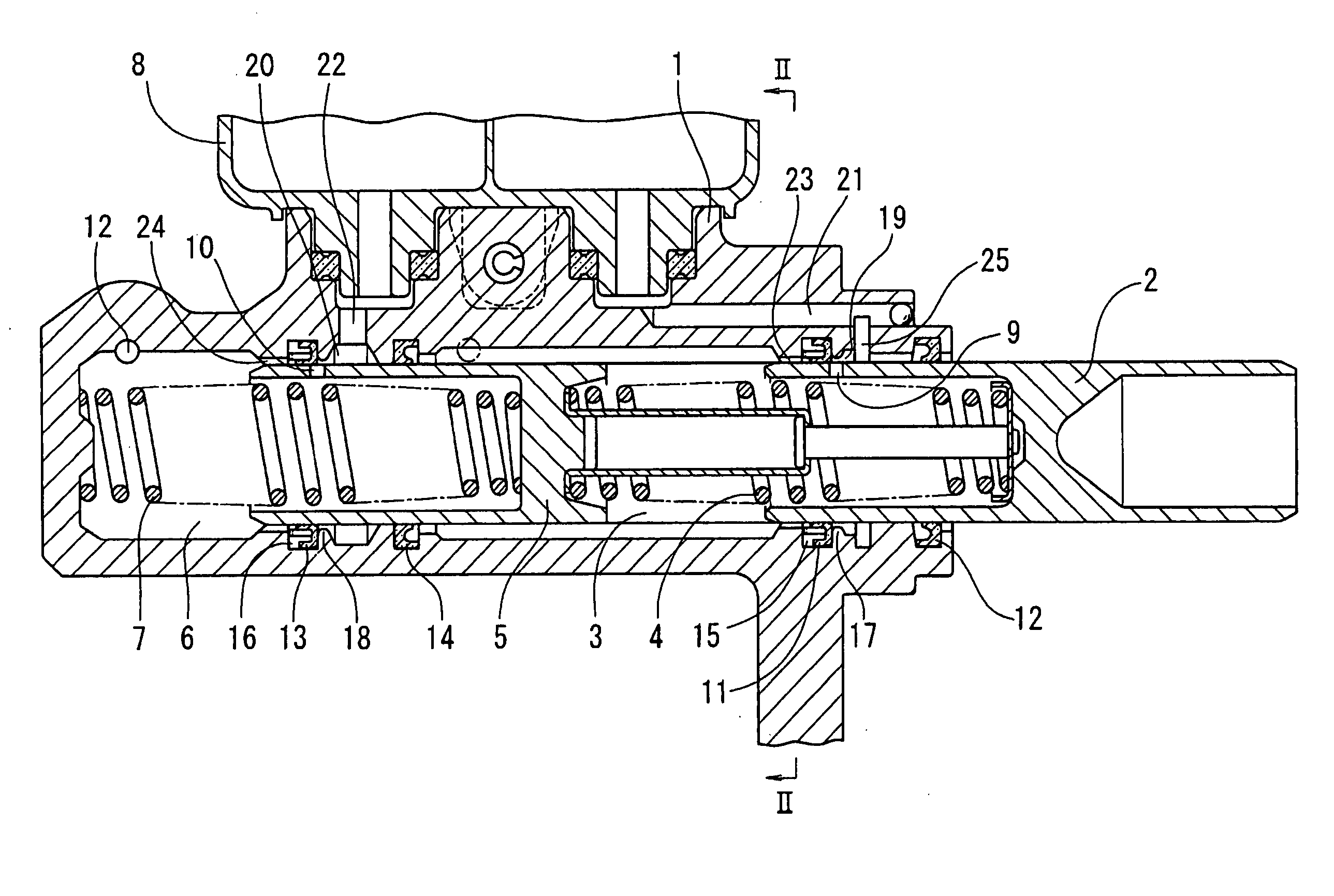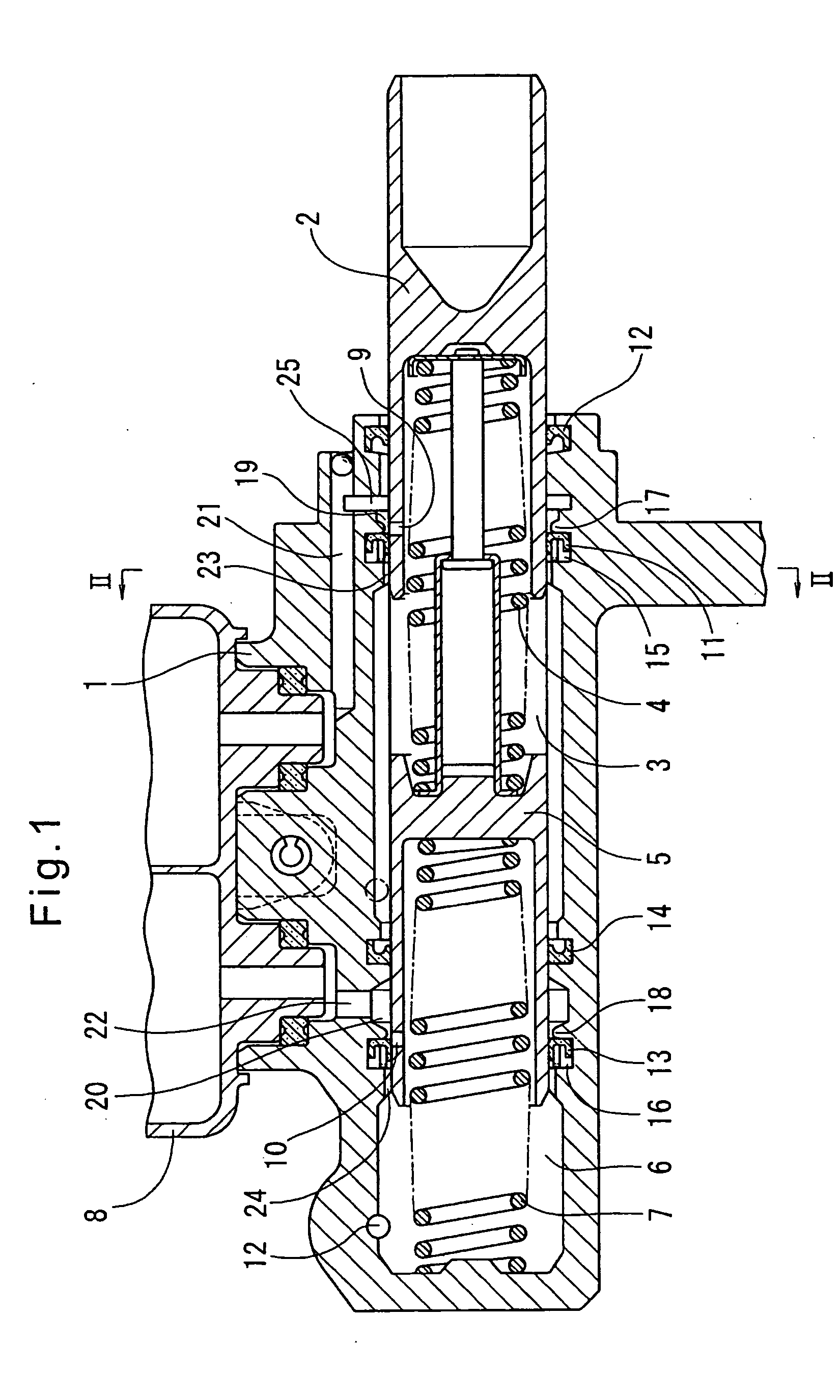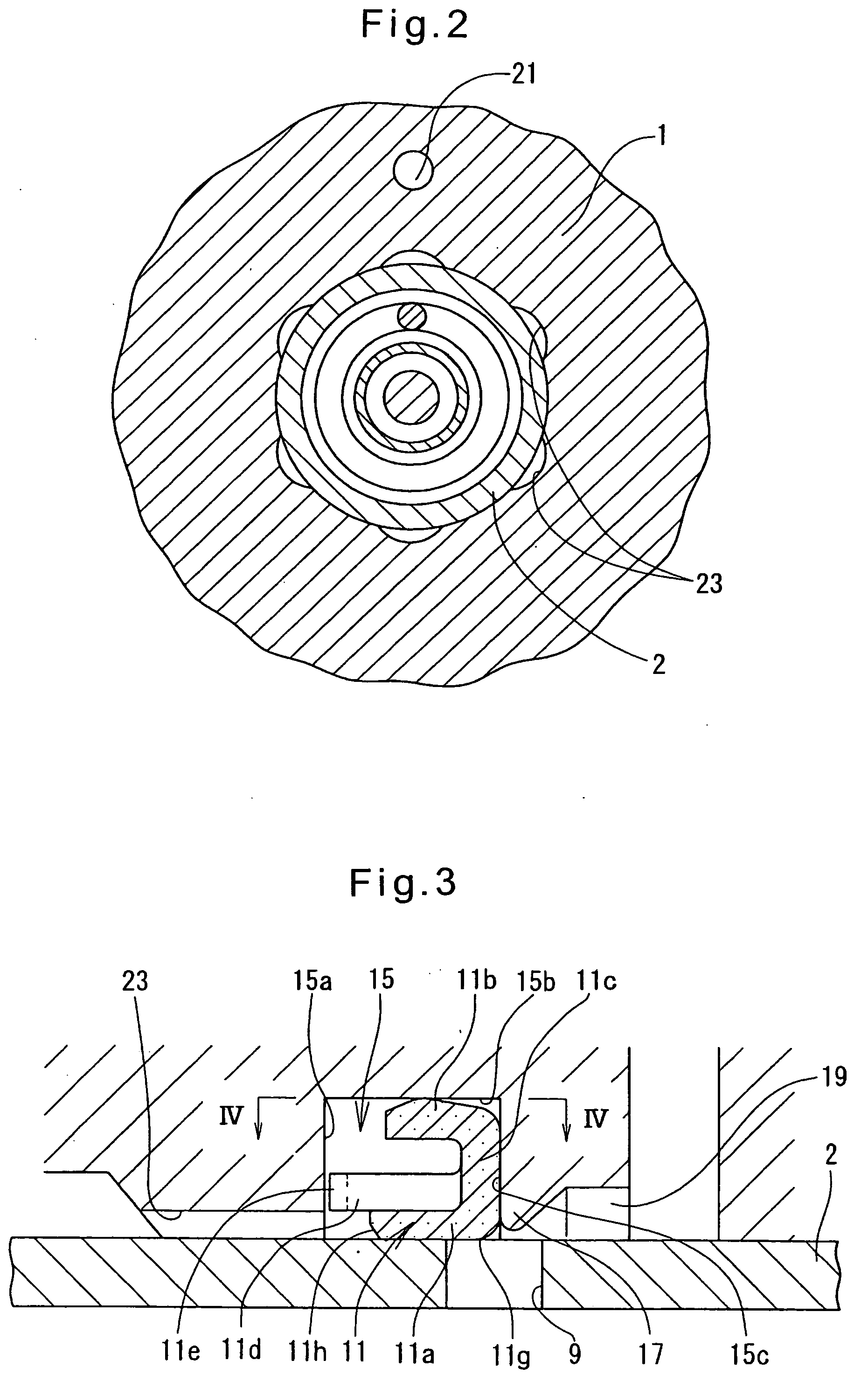Master cylinder
a technology of master cylinder and cylinder body, which is applied in the direction of rotary clutches, braking systems, fluid couplings, etc., can solve the problems of deteriorating the feel of the driver's brake pedal, low strength of the primary cup, and impede the stable seating of the primary cup
- Summary
- Abstract
- Description
- Claims
- Application Information
AI Technical Summary
Benefits of technology
Problems solved by technology
Method used
Image
Examples
Embodiment Construction
[0040] Now referring to the drawings, FIG. 1 shows the entire master cylinder embodying the present invention. It comprises a cylinder body 1, a primary piston 2 slidably received in the cylinder body 1, a secondary piston 5 slidably received in the cylinder body 1 in front (leftwardly in FIG. 1) of the primary piston 2. A first pressure chamber 3 is defined in the cylinder body 1 between the primary and secondary pistons 2 and 5. A second pressure chamber 6 is defined in the cylinder body 1 between the secondary piston 5 and the front (left-hand) end wall of the cylinder body. The primary piston 2 pressurizes brake fluid in the first pressure chamber 3 to generate brake hydraulic pressure therein. The secondary piston 5 pressurizes brake fluid in the second pressure chamber 6 to generate brake hydraulic pressure therein. Return springs 4 and 7 for the primary and secondary pistons 2 and 5 are mounted in the first and second pressure chambers 3 and 6, respectively.
[0041] The primar...
PUM
 Login to View More
Login to View More Abstract
Description
Claims
Application Information
 Login to View More
Login to View More - R&D
- Intellectual Property
- Life Sciences
- Materials
- Tech Scout
- Unparalleled Data Quality
- Higher Quality Content
- 60% Fewer Hallucinations
Browse by: Latest US Patents, China's latest patents, Technical Efficacy Thesaurus, Application Domain, Technology Topic, Popular Technical Reports.
© 2025 PatSnap. All rights reserved.Legal|Privacy policy|Modern Slavery Act Transparency Statement|Sitemap|About US| Contact US: help@patsnap.com



